$2.3B Arena-Anchored Development Planned for Best Products Site in Henrico
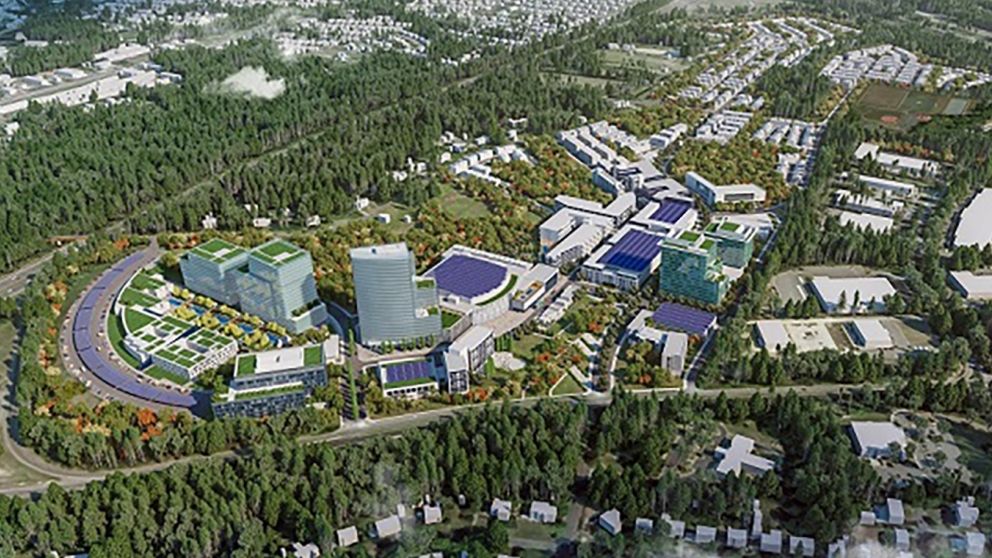
The city of Richmond’s loss could turn out to be Henrico County’s gain as the development team behind the failed Navy Hill proposal is now planning a comparable arena-anchored development at the site of the former Best Products headquarters in the county.
Henrico officials on Tuesday announced plans for GreenCity, a $2.3 billion development that would span 200 acres northeast of the Interstate 95-Parham Road interchange. The land consists of the county-owned Best site and more than 100 acres to the north owned by Bill Goodwin’s Riverstone Properties.
Envisioned as a so-called “ecodistrict” village, the development would be anchored by a $250 million, 17,000-seat arena, and include 2.2 million square feet of office space, 280,000 square feet of retail, two hotels, up to 2,400 residential units, and green space.
Behind the development are Michael Hallmark and Susan Eastridge, the team that a group of Richmond business heavyweights, including Goodwin, enlisted to design the former Navy Hill plan that a majority of Richmond City Council rejected in February. Navy Hill was likewise based around a similar-sized arena that was proposed to replace the shuttered Richmond Coliseum.
Where that $1.5 billion plan hinged on taxpayer support through a proposed tax-increment financing (TIF) district, officials said GreenCity would be different in that it would utilize another funding mechanism called a community development authority (CDA), which Henrico has used with such developments as Short Pump Town Center, White Oak Village and Reynolds Crossing.
In GreenCity’s case, Henrico would establish a CDA for the project site that would generate tax revenue to support the development as it progresses, expected over a period of 10 to 12 years. Thirty-year bonds used to finance the project would be paid off with tax revenue from the development’s initial phases, as well as from revenues generated from the arena.
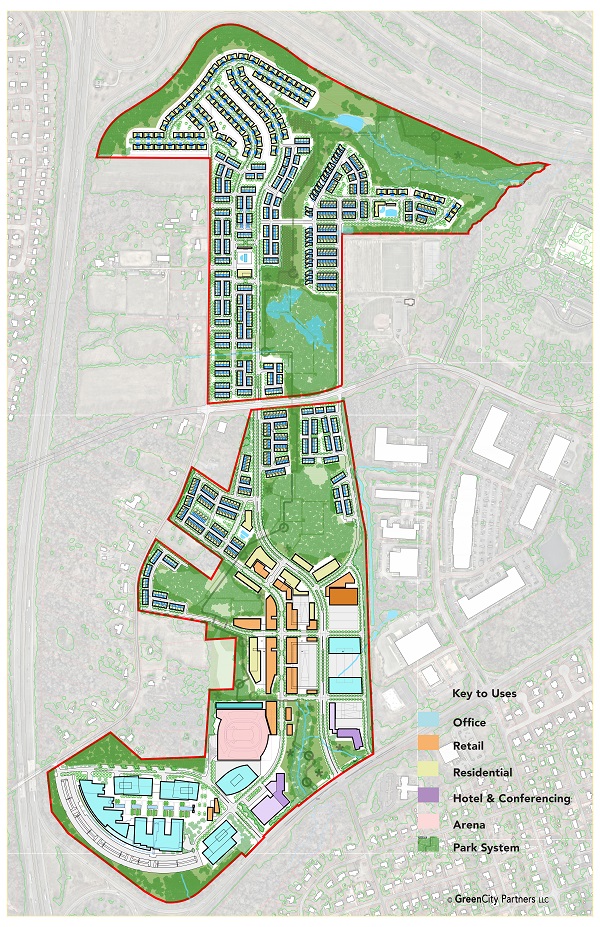
“This is a private development that calls for no use of existing county funds and no upfront investment by the county,” said Dan Schmitt, vice chairman of the Henrico County Board of Supervisors. He said GreenCity is projected to generate $20 million a year for the county once the bond debt is retired in 30 years, if not sooner.
“This carries no financial risk to our taxpayers. This will not add to the county’s debt. However, it will provide us with jobs, investment and countless other benefits,” Schmitt said, noting that those benefits would be realized during the development.
He added, “I congratulate the developers for their vision. I look forward to reviewing this project and its finances in greater detail as we continue to move forward. It’s a great day in Henrico.”
Tuesday’s announcement represented Henrico’s endorsement of the project. While a private development, Henrico would support it through rezoning approvals, creation of the CDA, and transferring the county-owned Best site’s 92 acres to the Henrico Economic Development Authority, County Manager John Vithoulkas said.
The EDA would then sell its site for $6.2 million, the amount it paid for the property in 2011, when it planned to convert the headquarters building into a government center. Those plans didn’t go forward, and the county has spent $350,000 annually to maintain the 286,000-square-foot building, which would be incorporated into the GreenCity development.
“This is what we do in Henrico: smart economic partnerships with no risk and significant benefit to the taxpayer,” Vithoulkas said.
“We’re talking about a new kind of community that is intricately planned, that is inclusive for all and thoughtfully designed to not only be livable but also environmentally sustainable,” he said. “A community that preserves, embraces and showcases open space, that drives economic development and tourism in new and exciting ways, while also remaining respectful to county taxpayers.”
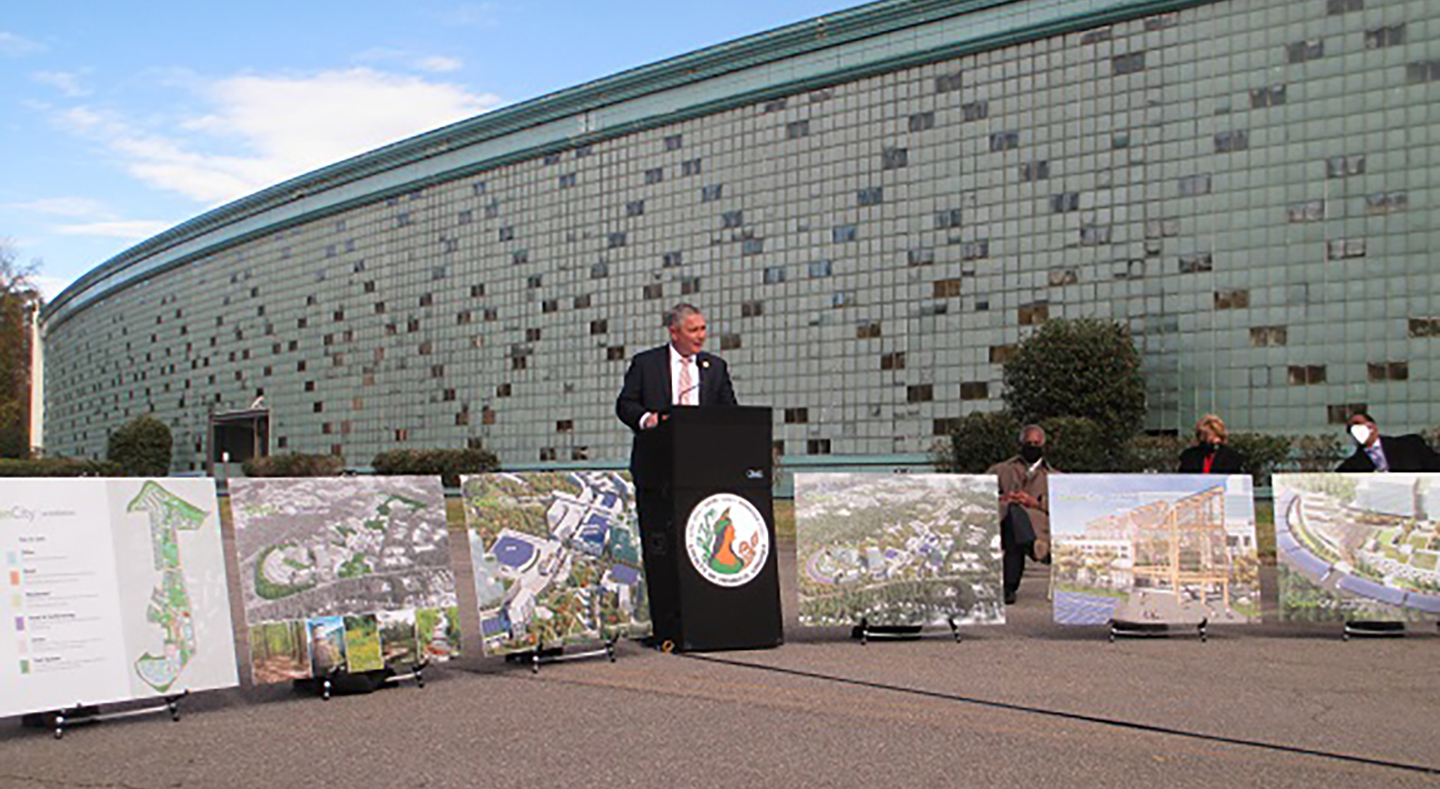
Land sales pending
Next steps include the purchase of the Goodwin-owned land, a 110-acre assemblage known as Scott Farm. Jeff Galanti, a principal with Goodwin’s Riverstone Properties, said discussions are ongoing with Hallmark and Eastridge, whose GreenCity LLC would purchase the land. Galanti said the purchase is contingent on rezoning and could involve all or some portion of the land.
Riverstone purchased Scott Farm in early 2015, paying more than $6.41 million combined for four parcels that make up the land. Those parcels were most recently assessed by the county in excess of $1.64 million collectively. With the Best property assessed at $8.54 million, the overall assessed value of the combined 205-acre site is about $10.19 million.
Galanti said he was approached about the project soon after Hallmark and Eastridge reached out to Vithoulkas, apparently in the wake of the Navy Hill vote in February. In his remarks Tuesday, Vithoulkas said Hallmark and Eastridge have been working on GreenCity for nine months, putting the start of the project’s design timeline at about March.
In January, just weeks before the Navy Hill vote, Henrico supervisors directed Vithoulkas to market the Best site for economic development along with the Goodwin land through a potential joint request for proposals. A formal RFP never went out, as the county put the proposal on hold due to the pandemic, EDA Director Anthony Romanello said.
Galanti said the timing of the RFP proposal and the Navy Hill vote was a coincidence.
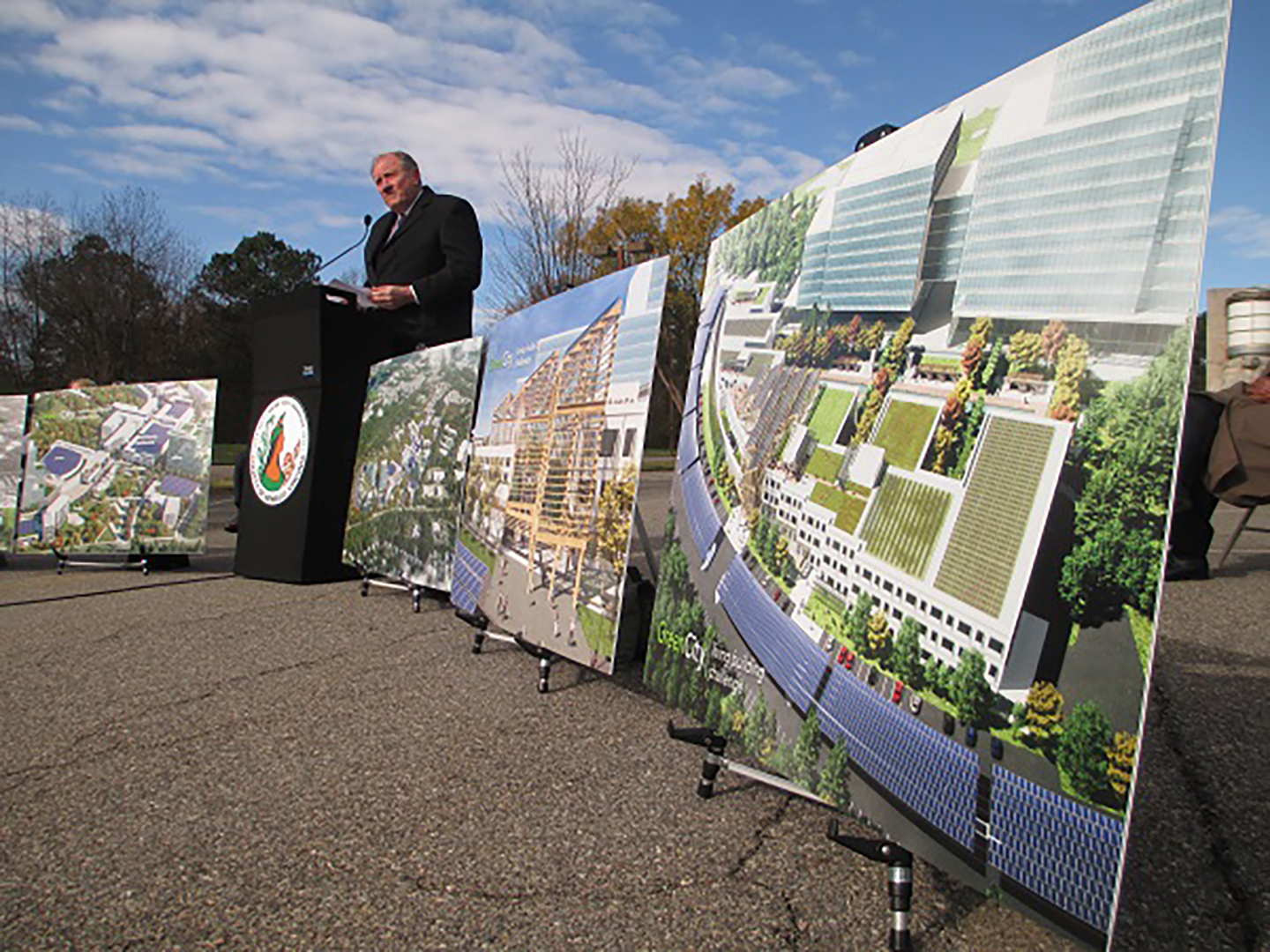
“It’s pure coincidence on the timing. I’d say it’s a very fortunate coincidence for us,” Galanti said after the announcement.
“We were looking at what needed to be developed on the parcel as a whole to unlock it. We were really thinking commercial, something to get the front door established,” he said. “Obviously, this is commercial on steroids.”
Galanti said Goodwin is not a cash investor in GreenCity. Neither are the other business heavyweights, such as Dominion Energy CEO Tom Farrell, who were involved in Navy Hill, according to materials distributed at the event.
A list of frequently asked questions distributed Tuesday said Navy Hill’s corporate backers are not involved in GreenCity “at this point,” adding that the developers “hope there will be involvement by the business community in the future.”
‘Ecodistrict’ development
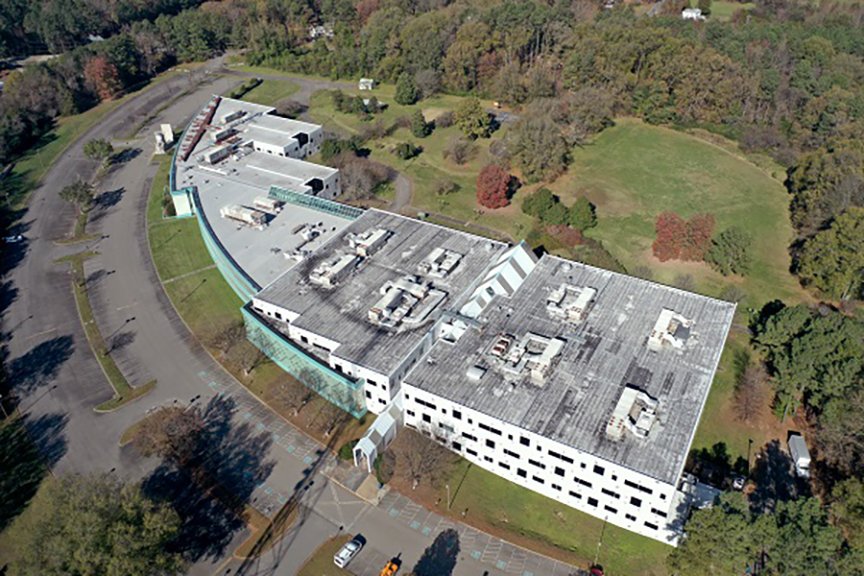
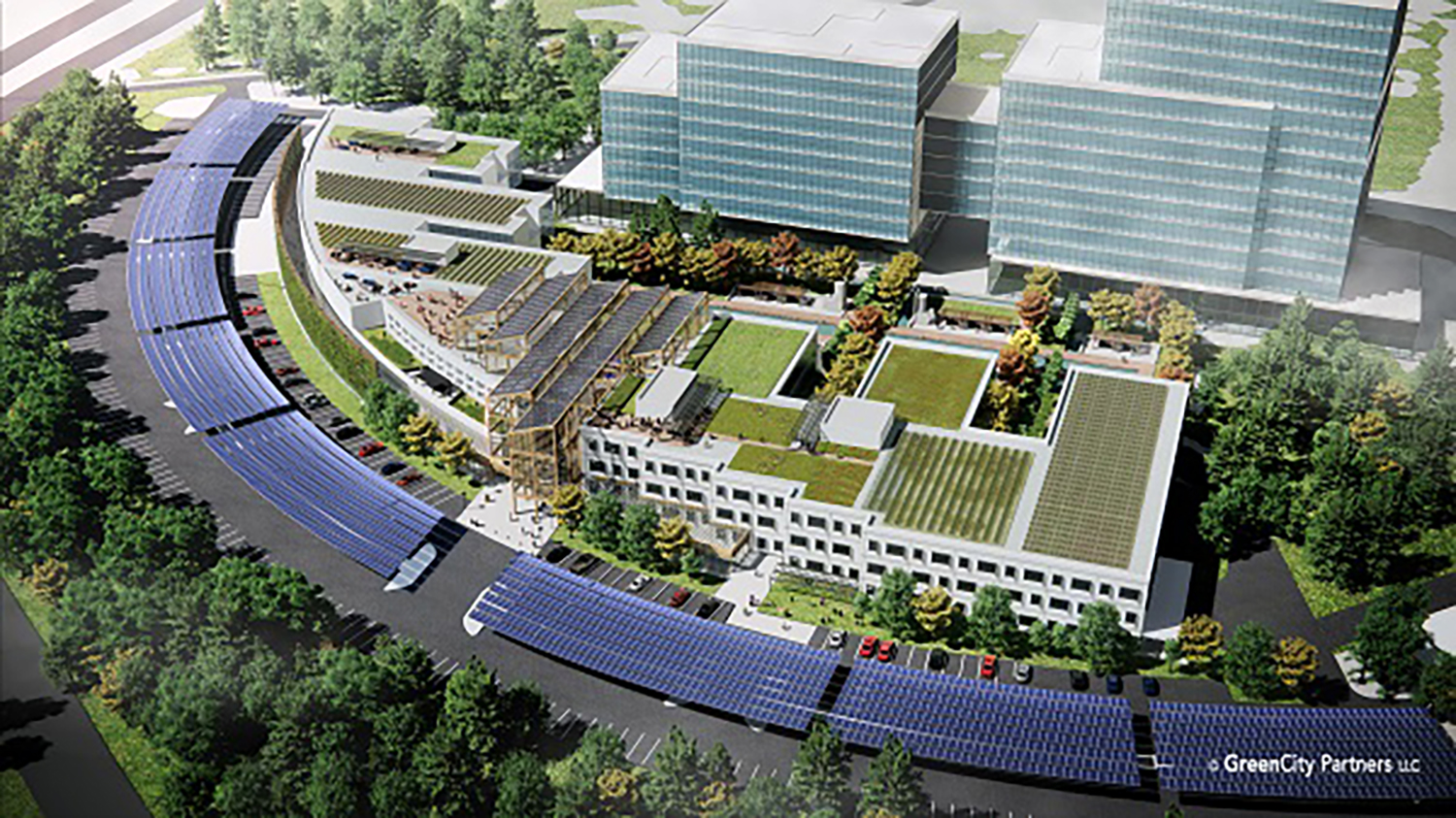
Hallmark said GreenCity would incorporate sustainable development practices, such as net-zero energy and water usage, and involve mixed-income housing and promote small- and minority-owned businesses. The residential units would include a mix of rental and for-sale housing types, with an unspecified number designated as “affordable” units.
Hallmark, a principal with Richmond-based Future Cities, described the project’s “ecodistrict” concept as incorporating existing forests and wetlands into the community, with a park system that would include a 1.5-mile trail, restored streams and other amenities.
“The vision for GreenCity brings together existing best practices in sustainability science with climate commitments,” Hallmark said. “These are commitments already embraced by individuals and businesses all around the world, but not always supported by the cities that we are building today.”
Added Eastridge, president of Northern Virginia-based development firm Concord Eastridge: “In a post-COVID world, people eventually will come back together. But they will come back to a new normal, which must include better building design, smarter heating-ventilation-air-conditioning systems, more indoor-outdoor design, and more direct connections to nature.”
Vithoulkas said the board would propose transferring the Best site to the EDA at its Jan. 26 meeting. Rezoning applications would be filed around that time, with the project using the county’s urban mixed-use zoning district.
That would kick off a three-year process to assemble and prep the land. A project timeline distributed Tuesday calls for the arena bonds to close in 2023, the arena opening in 2025, and GreenCity completing buildout in 2033.
Other projects underway
Tuesday’s announcement comes as Henrico is also working with developers to redevelop the nearby Virginia Center Commons mall, which is planned to house a smaller, county-owned arena that would be used for indoor sports and high school graduations.
It also comes as Hallmark and Eastridge are pursuing a separate development in the city: a $350 million, 20-story tower and mixed-use office complex that would replace Richmond’s Public Safety Building. That proposal appears to still be in play as the city wraps up related planning efforts, such as small area plans tied to the Richmond 300 master plan update.
That project would salvage some portions of Navy Hill, which had the support of Richmond Mayor Levar Stoney’s administration. On Tuesday, Lincoln Saunders, Stoney’s chief of staff, provided a statement in reaction to the GreenCity announcement.
“Obviously, Mayor Stoney believed an arena-anchored mixed-use redevelopment was a great opportunity to redevelop downtown and generate revenues and benefits for the city. Henrico’s announcement today shows that this vision had merit, and the mayor wishes them well and he’s glad that the region will benefit,” Saunders’ statement said.
Saunders added that the city has other economic development opportunities it would pursue in coming years. In addition to the Public Safety Building redevelopment, those opportunities include a proposed casino near Manchester and an anticipated RFP for development of city-owned land along Arthur Ashe Boulevard that would replace The Diamond and make way for a new baseball stadium.
City Councilmember Stephanie Lynch, who was among the council majority who voted down Navy Hill, said Tuesday that the city would focus on those projects, describing the GreenCity proposal as a win for the region.
“I think it’s an exciting opportunity for us to put some energy and motivation behind some of the projects that we have already underway,” Lynch said. “I don’t pit us in direct competition with Henrico. I think that this is going to help strengthen us as a region.”
Article Source Comes from BizSense












__footer.png?v=1628087212)

